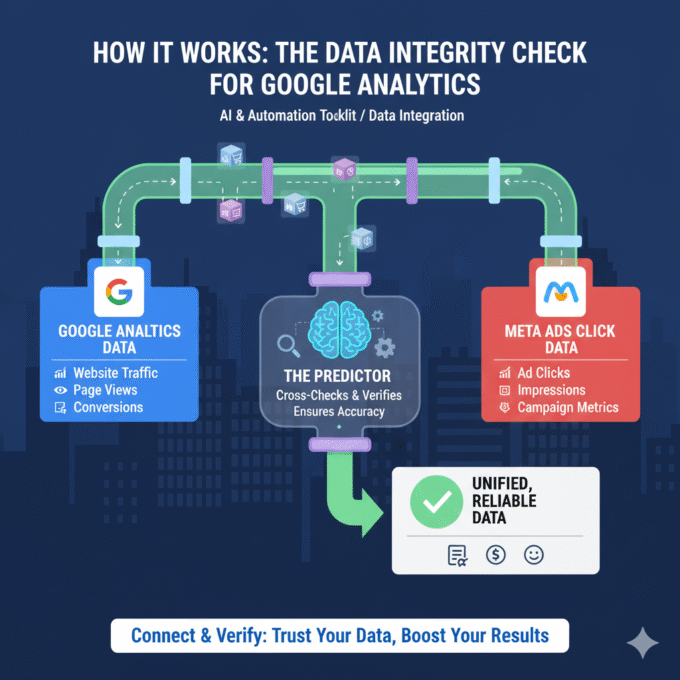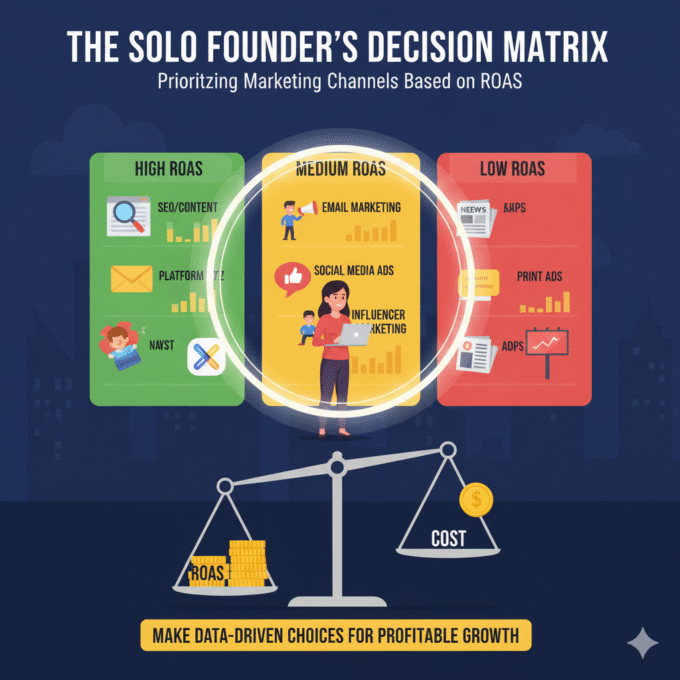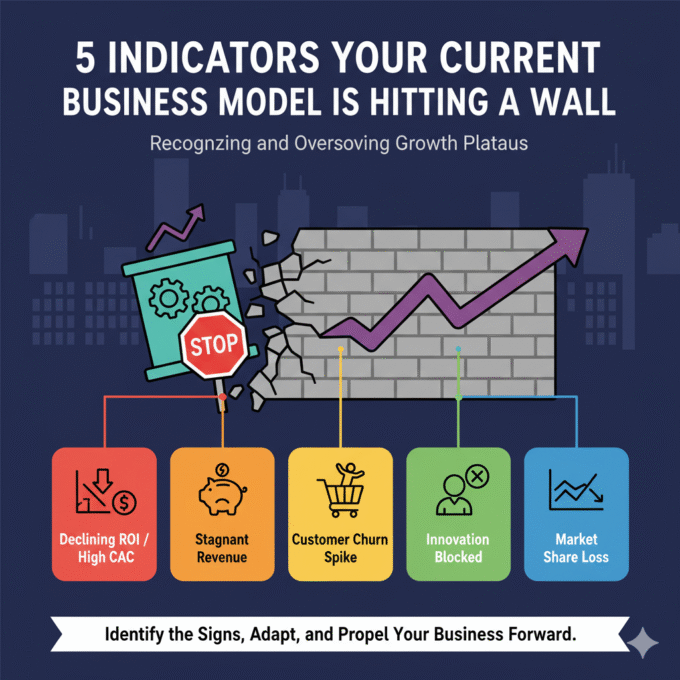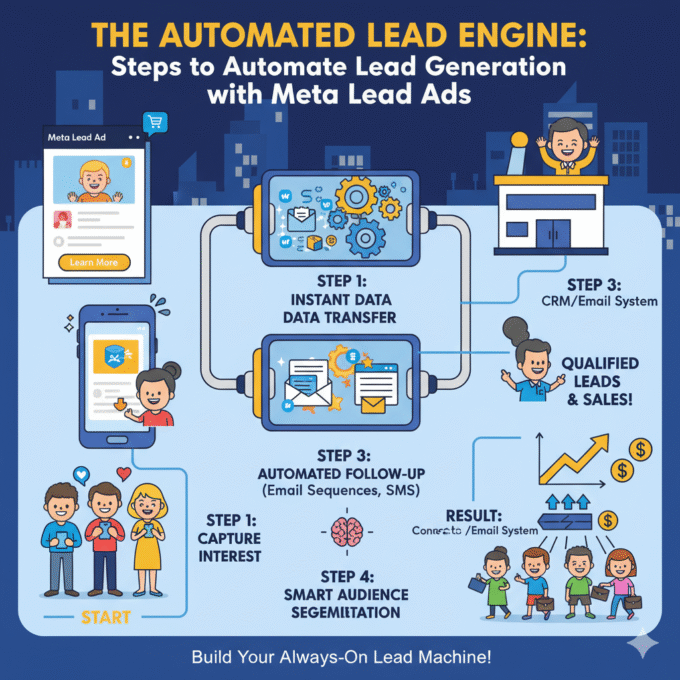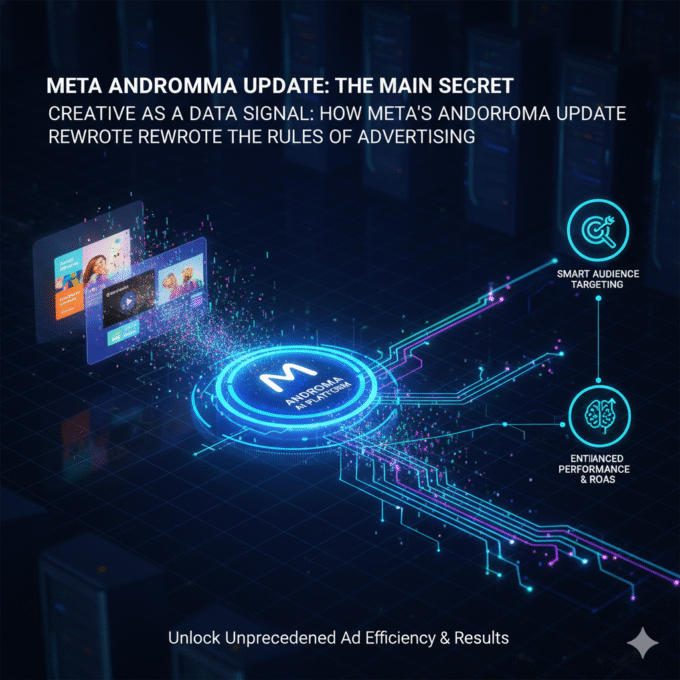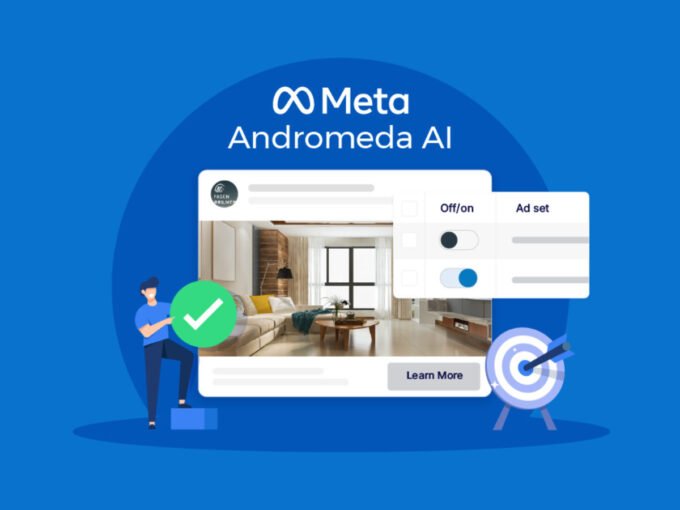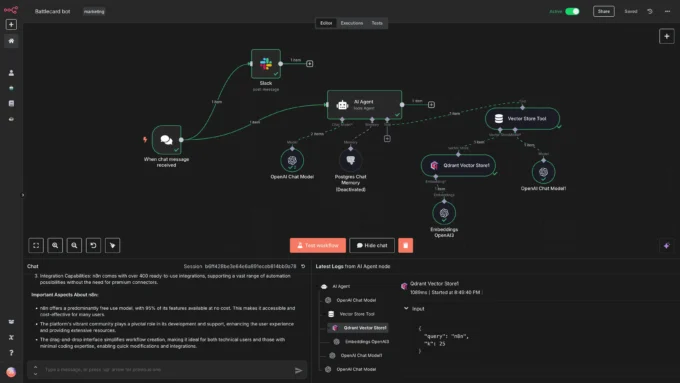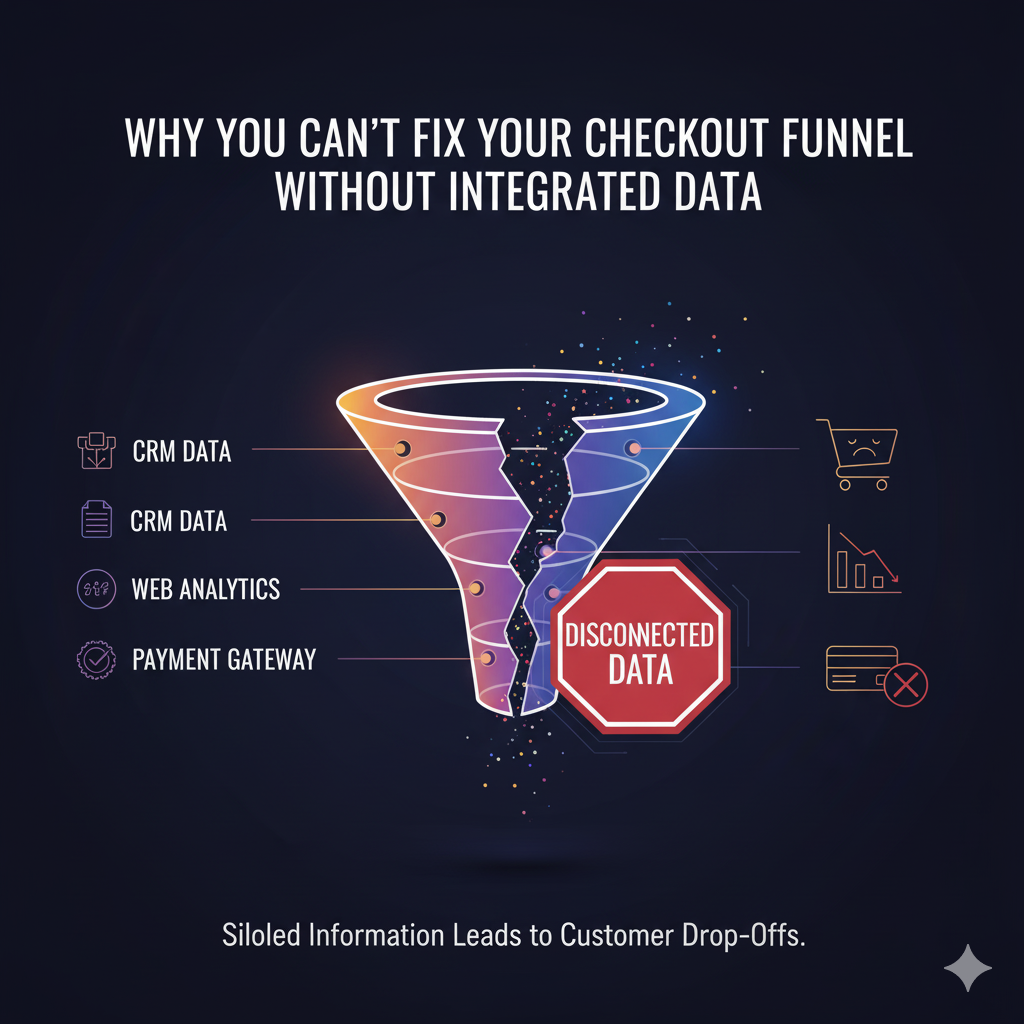
Why You Can’t Fix Your Checkout Funnel Without Integrated Data
September 29, 20254 Mins read22 ViewsWhy You Can’t Fix Your Checkout Funnel Without Integrated Data
You’ve done everything right. You’ve created a stunning e-commerce website, written compelling product descriptions, and driven a flood of traffic with high-performing ads. Your customers are adding products to their carts, but then, at the last moment, they abandon ship.
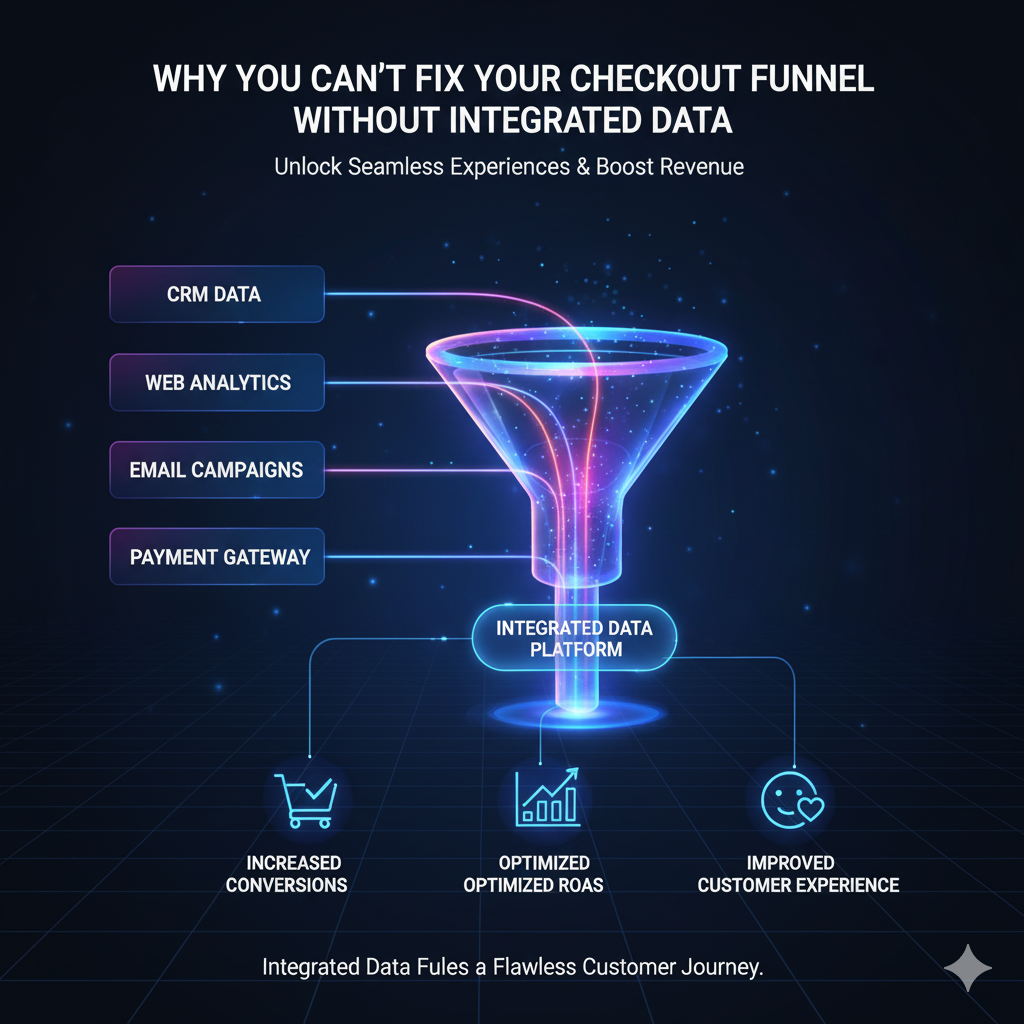
This is the universal nightmare of e-commerce. A staggering 70% of online shopping carts are abandoned, representing a massive hemorrhage of lost revenue. Marketers and business owners are desperate to fix checkout abandonment rate, but many are looking for the solution in the wrong place.
They’re trying to fix a problem in their checkout funnel with tools that only provide a fragmented, on-site view. They’ll shorten forms, test button colors, or reduce the number of steps—and still, the problem persists. That’s because the true e-commerce conversion bottlenecks often don’t start on your checkout page. They start with the traffic source itself.
To truly optimize your checkout, you must connect your user’s on-site behavior with the ad campaign that brought them to your store. This is a task that only an integrated data CRO system can accomplish.
The Frustrating Reality of Conversion Bottlenecks
In most businesses, marketing and conversion rate optimization (CRO) teams operate in silos.
The marketing team lives inside the ad platform. Their goal is to drive clicks and “Add to Carts.” They see a high conversion rate on these metrics, and they scale the budget. They think their job is done.
The CRO team, meanwhile, lives inside Google Analytics and heatmapping tools. They see where users are dropping off in the checkout process—the shipping page, the payment form, the final review. They analyze form fields and button colors, trying to patch the leak in the funnel.
Both teams are working in the dark, trying to fix a problem without seeing its true origin. They can’t answer the most critical question: “Why are certain traffic sources leading to a higher abandonment rate than others?”
Consider these common scenarios, which are invisible without integrated data:
- The Misleading Ad: Your Meta ad creative promises a steep discount or a special offer. Users click on it and add the product to their cart, expecting a deal. When they get to the checkout page, the price is higher than they expected (perhaps the discount was only for a limited collection), and they abandon the cart out of frustration. Your siloed ad data would show a successful “add to cart” rate, but your on-site analytics would show a high abandonment rate without a clear reason.
- The Audience Mismatch: You run a top-of-funnel ad targeting a broad, cold audience. You drive a massive amount of traffic and “add to carts.” However, these users are just browsing; they’re not ready to buy. They were never qualified in the first place, but your ad account metrics can’t tell you that.
These are not problems with your checkout page design. They are problems with your traffic and your audience targeting.
Why Your Analytics Are Lying to You
While powerful, your standard analytics platforms can’t tell the whole story.
- Google Analytics is a brilliant tool for understanding on-site behavior. It can tell you that “75% of users drop off at the shipping information page.” But it can’t tell you that 60 of those users came from a single, poorly targeted ad set on Meta, while the other 15 came from your highly engaged email list. Without this context, you might spend thousands of dollars redesigning your shipping page when the real issue is your ad creative.
- Meta Ads Manager is equally limited. It can show you which ads are driving “add to carts,” but its visibility ends when the user leaves the platform. It can’t tell you if that “add to cart” came from a high-intent buyer or a low-quality browser. You are left with a misleading metric that encourages you to scale a campaign that is actually costing you a fortune in lost revenue.
The data is there, but it’s sitting in different systems, unable to talk to one another.
The Solution: An Integrated Data Framework
The only way to truly fix checkout abandonment rate is to connect your traffic source data with your on-site behavioral data. An integrated unified marketing dashboard can tell you which users from which ad campaigns are dropping off, and at which specific step.
Imagine this scenario:
You have two active Meta ad sets.
- Ad Set A has a great “Add to Cart” rate.
- Ad Set B has a lower “Add to Cart” rate.
Based on siloed data, you would logically allocate more budget to Ad Set A.
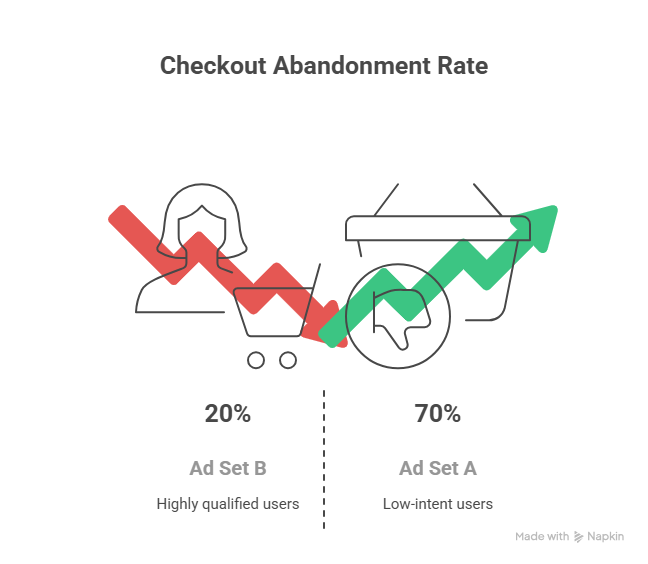
However, an integrated data CRO system would reveal a different truth:
- Ad Set A has a 70% checkout abandonment rate. Its high “Add to Cart” rate is coming from low-intent users who abandon the cart as soon as they see the shipping costs.
- Ad Set B has a 20% checkout abandonment rate. While it drives fewer “Add to Carts,” the users it does attract are highly qualified and motivated to complete their purchase.
With this new, holistic analytics view, you would immediately pause Ad Set A and scale up Ad Set B. You would discover that your checkout funnel isn’t broken; your traffic is. This is an insight that is impossible without a single source of truth.
Funnel Optimization Tips for the Integrated Marketer
Once you have an integrated system, you can move beyond guesswork and start running tests that actually matter.
- Segment by Traffic Source: Analyze your checkout funnel for traffic coming from each specific ad set. Identify which ad sets are the leakiest, then dig into their creative and targeting to find the root cause.
- Correlate Abandonment with Creative: Is a specific ad creative leading to a higher abandonment rate? A/B test a new creative that more accurately sets user expectations, and use your integrated data to see if it reduces abandonment.
- Optimize Your Landing Page for Funnel Success: Use your integrated data CRO to analyze whether users who land on a specific product page have a higher checkout completion rate than those who land on a collection page. Use this insight to adjust your ad linking strategy.
The biggest e-commerce conversion bottlenecks are often upstream, in your traffic sources. By embracing an integrated data framework, you move beyond the limits of fragmented analytics and gain the clarity needed to truly optimize your checkout funnel and unlock your full revenue potential.
More News
The Data Integrity Check for Google Analytics
How It Works: The Data Integrity Check for Google Analytics In the...
October 21, 2025The Solo Founder’s Decision Matrix: Prioritizing Marketing Channels Based on ROAS
The Solo Founder’s Decision Matrix As a solo founder, your most precious...
October 21, 20255 Indicators Your Current Business Model is Hitting a Wall
5 Indicators Your Current Business Model is Hitting a Wall The success...
October 21, 2025The Automated Lead Engine: Steps to Automate Lead Generation with Meta Lead Ads
Steps to Automate Lead Generation with Meta Lead Ads Meta Lead Ads...
October 20, 2025META Andromeda update main secret
Creative as a Data Signal: How Meta’s Andromeda Update Rewrote the Rules...
October 20, 2025Meta Andromeda: The Next-Generation AI Engine for Performance Growth
I. Executive Summary: The Andromeda Paradigm Shift 1.1. Introduction to the AI...
October 14, 2025The Data Integrity Check for Google Analytics
How It Works: The Data Integrity Check for Google Analytics In the...
October 21, 2025The Solo Founder’s Decision Matrix: Prioritizing Marketing Channels Based on ROAS
The Solo Founder’s Decision Matrix As a solo founder, your most precious...
October 21, 20255 Indicators Your Current Business Model is Hitting a Wall
5 Indicators Your Current Business Model is Hitting a Wall The success...
October 21, 2025The Automated Lead Engine: Steps to Automate Lead Generation with Meta Lead Ads
Steps to Automate Lead Generation with Meta Lead Ads Meta Lead Ads...
October 20, 2025


